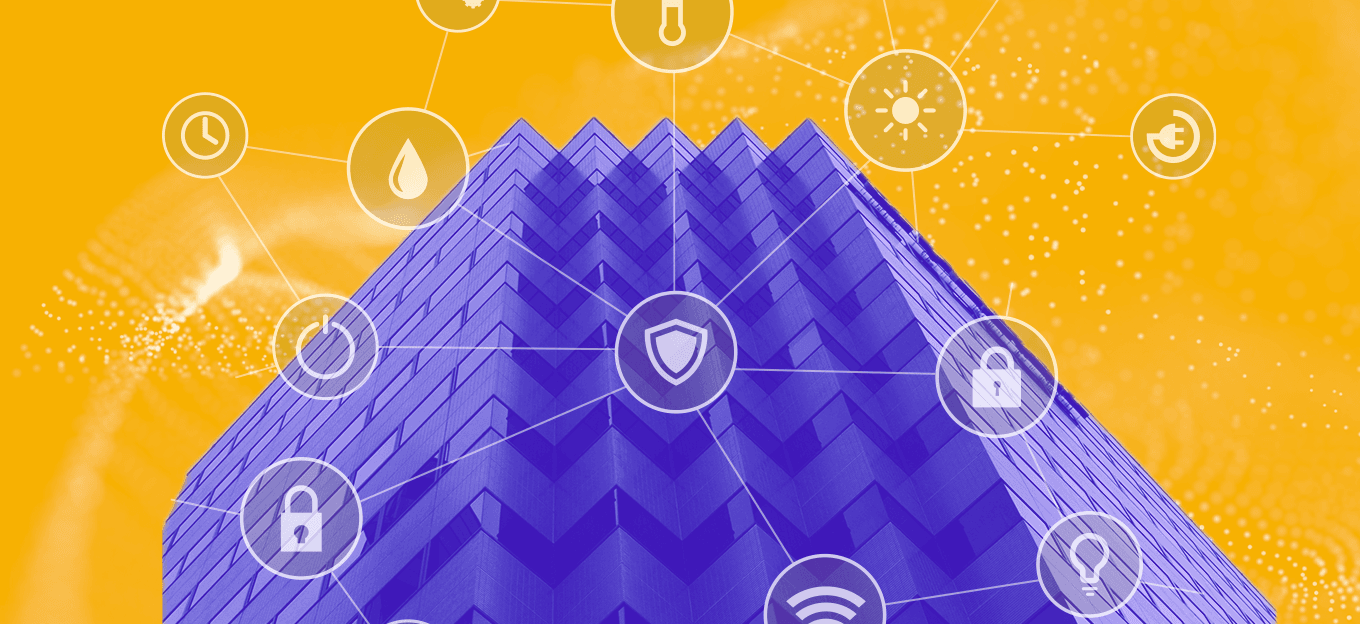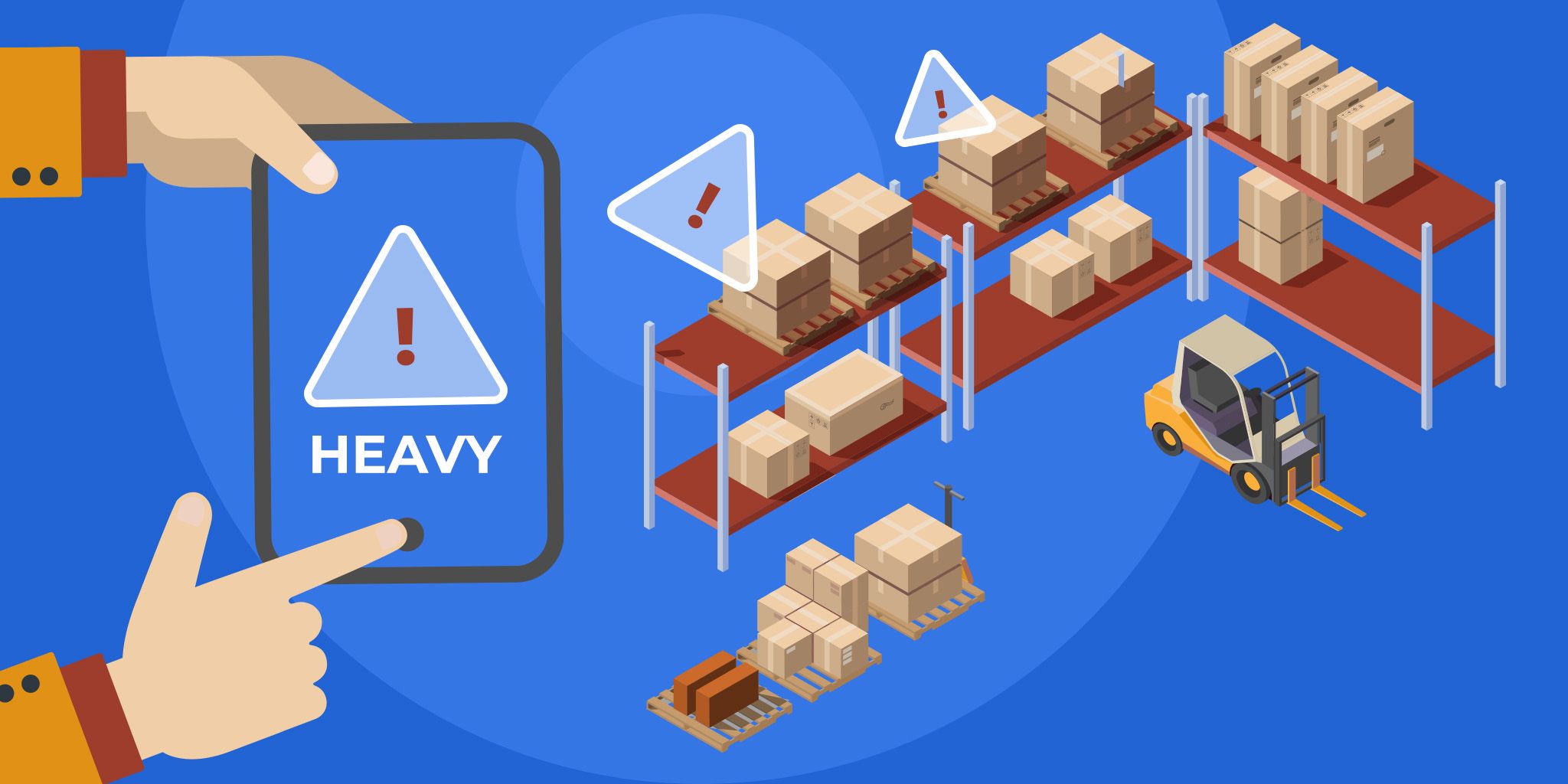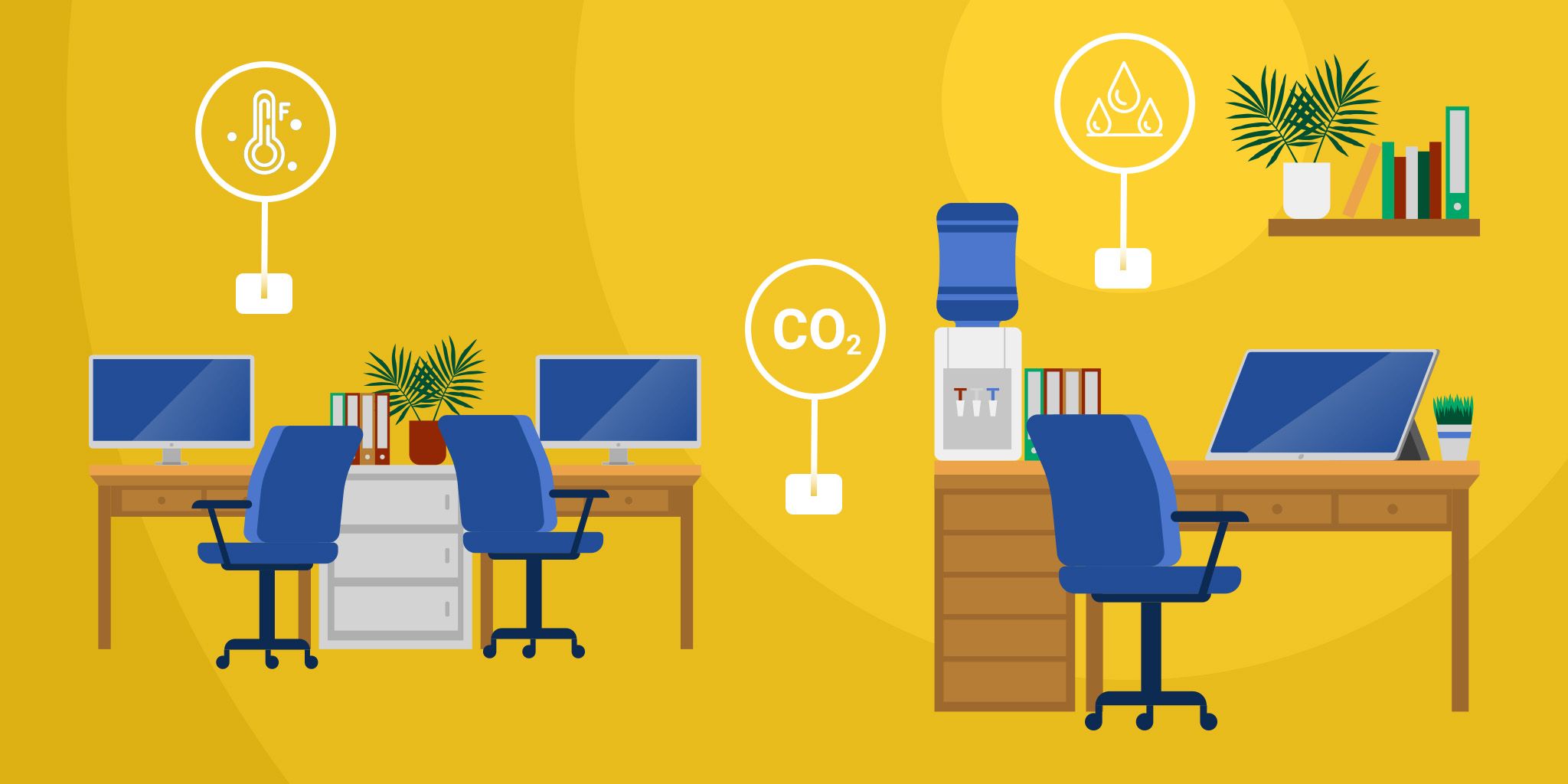How Integrated IoT Solutions Are Creating Smart, Green, and Healthy Buildings
How Integrated IoT Solutions Are Creating Smart, Green, and Healthy Buildings
- Last Updated: November 19, 2025
Milesight
- Last Updated: November 19, 2025



Buildings are responsible for nearly 39% of global energy-related carbon emissions, making them a critical focus for decarbonization efforts. Building owners today face a difficult set of challenges: rising energy costs, strict environmental regulations, and increasing tenant demand for healthier spaces. While the goals of efficiency and sustainability are clear, the path to achieving them can seem complex. The solution lies in moving from traditional, reactive management to a data-driven, automated approach using an integrated IoT strategy.
Actionable Strategies for Building Optimization
IoT smart building solution serves a threefold purpose: making the building itself more efficient and resilient, reducing its impact on the planet, and improving the health and well-being of the people inside.
For Buildings: Driving Operational Efficiency and Longevity
The first duty of a smart building is to be a well-run, durable asset. IoT solutions help protect buildings from damage and run their core systems with maximum efficiency, directly reducing operational and capital expenditures.
HVAC Predictive Maintenance
HVAC performance could be degrading due to issues like low refrigerant, duct leaks, or failing components. Implement a multi-layered monitoring strategy to get a complete picture of HVAC health. Use smart thermostats as a primary data source, which provide temperature setpoint and the system's operational status. Compare it with data from temperature sensors measuring the actual ambient temperature. Further diagnose issues using duct temperature sensors to measure the air being supplied and current sensors to monitor the unit's power draw. By analyzing these data streams together, you can identify an underperforming unit long before it fails.
Asset Protection
Use smart current transformers on electrical circuits to detect overcurrent (from surges or aging equipment) and undercurrents (from faulty wiring), preventing equipment damage and fire risks. Install pipeline pressure sensors to monitor fluctuations that could indicate a potential leak or blockage before a pipe bursts. Environmental humidity sensors can trigger ventilation to prevent long-term structural damage from mold. Moreover, deploy water leak sensors in high-risk areas that are linked to automated shut-off valves, providing an instant response to stop a leak in its tracks.
Space Optimization
In office and commercial buildings, underutilized spaces are a wasted expense, while overcrowded areas can frustrate employees and visitors. Deploy occupancy or people counting sensors to gather anonymous data on space utilization patterns. The analytics platform can generate heatmaps and reports showing which spaces are most popular, which are underused, and at what times of day. This actionable intelligence allows you to optimize floor plans, reallocate space for high-demand uses, and make informed, data-driven decisions about future real estate needs. It also enables operational efficiencies, such as adjusting cleaning schedules to focus on high-traffic areas.
For the Planet: Energy Optimization for ESG Goals
With governments imposing strict energy codes, IoT provides a practical approach for buildings to become active partners in decarbonization.
Automated Energy Management
The largest consumers of energy in a building, such as HVAC and lighting systems, typically run on fixed schedules, wasting vast amounts of electricity on empty or partially occupied spaces. With a network of environmental and occupancy sensors, real-time temperature, humidity, and presence data can be sent to Building Management System (BMS). For example, an automation rule can be set: "If a meeting room is unoccupied for 5 minutes, turn off the lights and command the HVAC to enter an energy-saving setback mode." Such demand-based control ensures that energy is consumed only when and where it is needed, delivering significant and immediate reductions in utility costs.
Targeted Energy Optimization Strategy
Without knowing exactly which systems are consuming the most power, energy efficiency efforts can be unfocused and ineffective. Install non-invasive smart current transformers on the main electrical circuits to track and visualize energy consumption over time. This data provides a clear, evidence-based picture of where your energy dollars are going, allowing you to prioritize upgrades with a clear and predictable return on investment. By tracking the power consumption of individual circuits and equipment, facility managers can identify high-consumption areas and inefficiencies, enabling a targeted strategy to reduce the building’s overall energy footprint.
For People: Creating Healthy, Safe, and Productive Environments
A building's highest calling is to serve its occupants. IoT solutions deliver a superior human experience by making spaces more responsive to their needs.
Enhanced Indoor Air Quality
Poor air quality, specifically high concentrations of CO2, is proven to cause drowsiness and reduce cognitive function and productivity. IAQ sensors in densely occupied areas like conference rooms, classrooms, and open-plan offices continuously monitor CO2 levels, VOCs, and other pollutants. Integrate this data with the ventilation system to enable demand-controlled ventilation. For example, when CO2 levels rise above a predefined healthy threshold, the sensors automatically signal the BMS to increase the intake of fresh air to that specific zone. It ensures optimal comfort while avoiding the energy waste of over-ventilating the entire building.
Improved Hygiene and Safety
Buildings have hygiene and safety blind spots that can negatively impact occupant experience and pose significant risks. Specialized sensors can detect odors and harmful gases like ammonia that indicate a need for cleaning, triggering on-demand alerts to janitorial staff. In non-smoking zones, install smoke and vapor detection sensors that send discreet alerts to management when policy violations occur. For safety, especially in hospitals or senior care facilities, use privacy-protecting sensors to detect falls or prolonged immobility, sending instant alerts to responders to drastically reduce intervention times.
Why LoRaWAN® Is Ideal for Sustainable Buildings
A truly sustainable smart building solution depends on collecting reliable data from every corner of a facility, often in places that are hard to reach. LoRaWAN® (Long Range Wide Area Network) has emerged as the ideal connectivity solution for these environments. Its low-power consumption allows sensors to operate on a single battery for years, drastically reducing electronic waste and maintenance overhead. The long-range signal can penetrate dense materials like concrete and steel, ensuring seamless connectivity across large, complex buildings with minimal infrastructure. LoRaWAN® enables a low-impact, wireless deployment that avoids the disruptive, costly, and carbon-intensive process of running new cables, making it perfect for retrofitting existing properties. Moreover, its ability to connect thousands of devices to a gateway makes the system highly scalable, allowing buildings to adapt and evolve over time without requiring a complete overhaul.
The Path Forward
Transforming a building into a smart, sustainable asset is an achievable process. Even the oldest, least efficient properties can be retrofitted to meet modern standards. It doesn’t have to be a complete overhaul. You can start with a targeted pilot project, such as automating the lighting on a single floor or monitoring the energy of one critical system. Wireless technologies like LoRaWAN make these initial steps fast, affordable, and non-disruptive. By focusing on solving specific problems with a proven approach, you can build a clear business case and scale your efforts for a truly future-proof building.
For a deeper dive into the specific technologies, implementation frameworks, and real-world case studies behind these strategies, download the full whitepaper: An Integrated IoT Solution for Smart, Green, and Healthy Buildings.
As the technology matures, IoT solutions are becoming the standard for all high-performing properties. It is the most practical and effective approach for building owners seeking to reduce costs, meet sustainability mandates, and deliver the superior environments that tenants and employees now expect.
The Most Comprehensive IoT Newsletter for Enterprises
Showcasing the highest-quality content, resources, news, and insights from the world of the Internet of Things. Subscribe to remain informed and up-to-date.
New Podcast Episode

What is Hybrid Connectivity for IoT?
Related Articles



